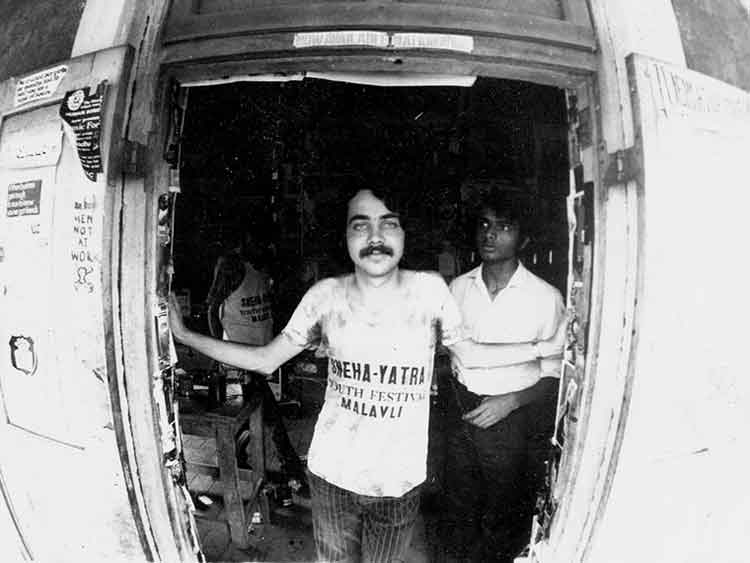Each week, World in Stereo examines classic and modern world music while striving for a greater appreciation of other cultures.
 Various Artists: Psych Sa-Re-Ga! Seminar: Aesthetic Expressions of Psychedelic Funk Music in India, 1970 to 1983 (World Psychedelic Funk Classics, 12/7/10)
Various Artists: Psych Sa-Re-Ga! Seminar: Aesthetic Expressions of Psychedelic Funk Music in India, 1970 to 1983 (World Psychedelic Funk Classics, 12/7/10)
R.D. Burman featuring Asa Bhosie and Kishore Kumar: “Lekar Ham Diwana Dil”
[audio:https://alarm-magazine.com/wp-content/uploads/2010/12/06-Lekar-Ham-Diwana-Dil.mp3|titles=R.D. Burman featuring Asa Boshie and Kishore Kumar: Lekar Ham Diwana Dil]
World Psychedelic Funk Classics has released a mind-bending collection of Indian grooves that draws heavily from ’70s and ’80s Bollywood. A treasure trove for groove seekers, Psych Funk Sa-Re-Ga! includes a number of wild and tripped-out numbers that speak directly to the melodic wonderland that is India.
Music nerds will be pleased by the limited-edition package, available as a double LP or deluxe digipack CD, and equipped with hefty in-depth liner notes and photos of the thick mustaches and permed hairdos behind some of the the grooviest music that the world has ever heard.
In the mid-1960s, East and West rock ‘n’ roll musicians alike borrowed, tweaked, and exchanged themes and styles in a vibrant musical dialogue. This conversation was apparent even on mainstream classics of the time, including the 1967 release of The Beatles‘ Sgt. Pepper’s Lonely Hearts Club Band, a record that has obvious classical Indian influences.
At the same time, the garage-rock scene in India was exploding. In both cases, the youth scene began to emerge, marked in India by the country’s first rock zine, The Junior Statesman, whose archives serve as a late-Twentieth Century chronicle of rock-‘n’-roll music in India. An annual battle of the bands, held by the Simla cigarette company in Mumbai, spawned the sort of progressive music found in the first two bare-boned tracks on the compilation.
By and large, Psych Funk Sa-Re-Ga! ends up sounding like one big experiment in fusing India’s Hindustani and Carnatic traditions with Western psychedelic music — most particularly garage, mod, and soul. Those who expect complex ragas and Indian intonations might be surprised by the composers’ reliance on the Western chromatic scale. It’s a free-spirited mix where wild, one-string guitar licks and groovy bass rhythms blend furiously with sweet Indian flourishes.
Taking much of its source material from Bollywood, the compilation offers cuts from two of the most popular soundtrack writers at the time, R.D. Burman and the brothers known as Kalyanji Anadji. Offering mod-like vocal dynamics with tracks like Burman’s “Lekar Ham Diwana Dil” and Anadji’s “Somebody to Love – Edit,” the two artists are responsible for nearly half of the album. Though the Bollywood tracks are home to many rapid-fire funk tracks and dramatic horn arrangements, WPFC did a fantastic job in curating the best from each of the composers.
But aside from grandiose Bollywood string breaks and peppy horn lines, the compilation also unearths some rare and obscure tracks from the era. These gems are a perfect sampling of what this golden era has to offer in the early global groove movement. The tracks sound a bit raw, definitely more fuzzed out, and run the gamut of Western-influenced psychedelia.
As a dirty, sped-up version of the original, Atomic Forest‘s cover of Deep Purple‘s “Mary Long” is a must-hear, with its soaring guitar and garage-rock underpinnings. Anthemic surf-rock tracks like Bappi Lahar‘s “Everybody Dance With Me” and Sapan Jagmohan‘s “Meri Aakhon Mein Ek Sapna Hai” sound like they could be the party tunes to the most epic beach party in 1970s Mumbai.
With Psych Funk Sa-Re-Ga!, World Psychedelic Funk Classics offers an in-depth introduction to India’s psychedelic music brand. Though the album goes to show the hold that Bollywood had on India’s popular music, it all would not be possible if not for underground acts like The Black Beats and X’Lents, winners of the Simla band battles. Featuring artists lifted from obscurity, Psych Funk Sa-Re-Ga! gives groove fans a comprehensive picture of the scene, from its early beginnings to its commercial peak.

